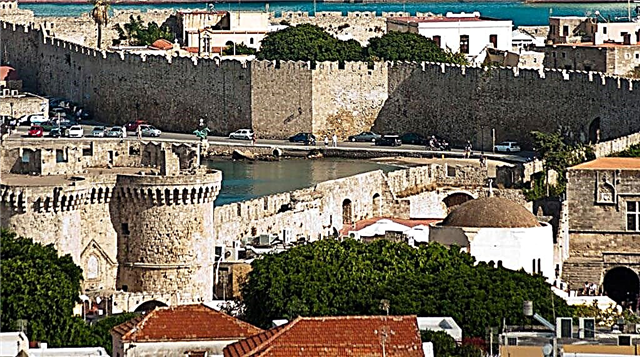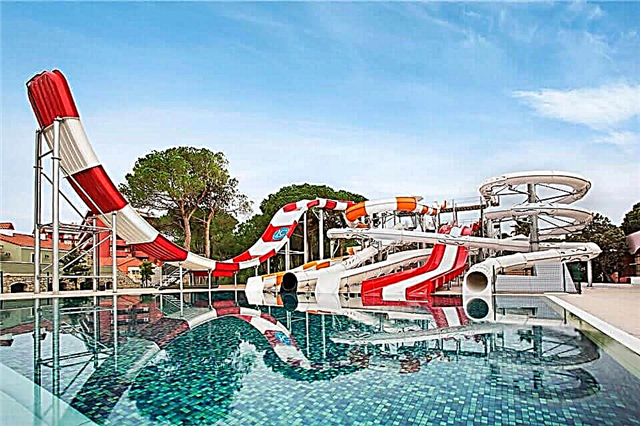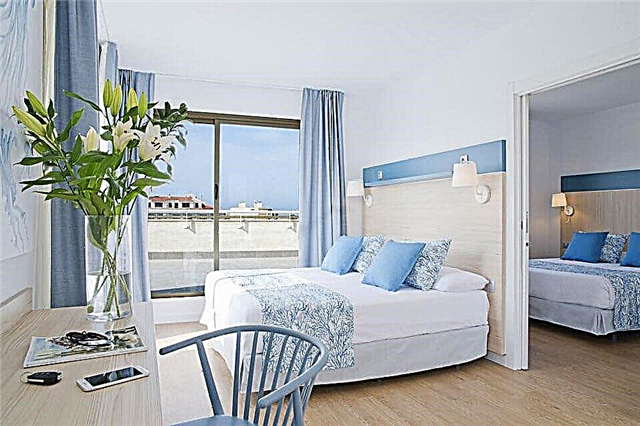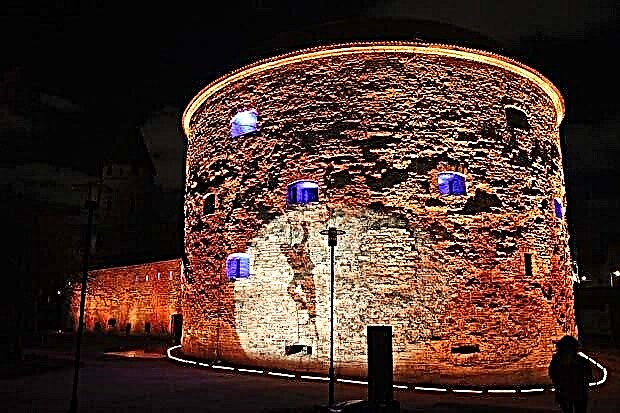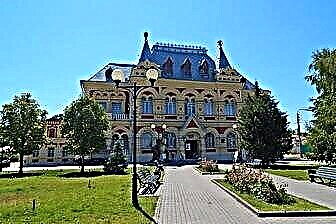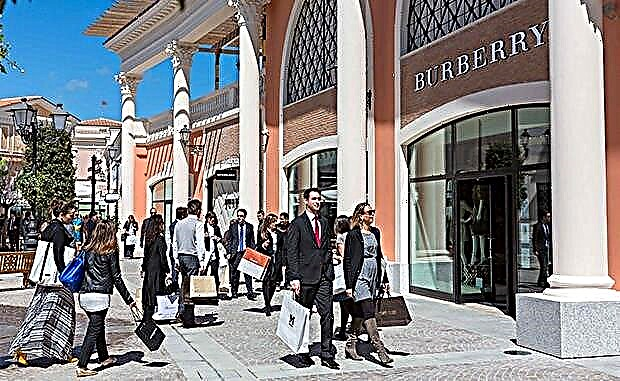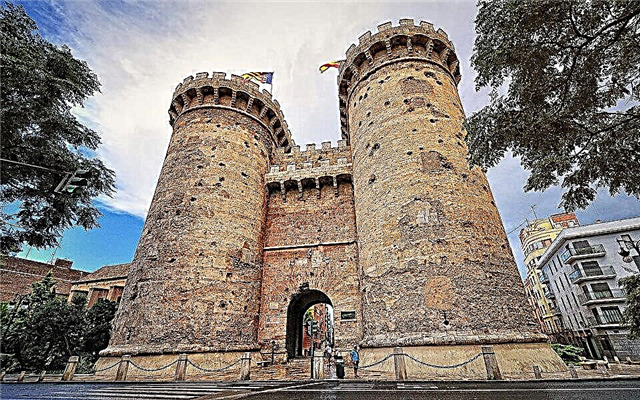The ancient Spanish city is famous all over the world for its sights. Of course, it would be nice to be here for a long time, but a lot can be done in a short time. What to see in Valencia in one day? We offer an interesting route around the city.
Museum of Fine Arts

It is this museum that offers to admire the richest collection of paintings in the country. It is located in a park, where the Turia River used to flow, in an old college building. During the civil war, a hospital was located here, later the building itself and the adjacent church were transferred to the museum, which was headed by Gonzalez Martí, a man who did a lot for the development of cultural institutions in Valencia.
In the museum, you can see works of art from different eras - from the Middle Ages to the early 20th century: paintings, sculptures and much more. The works of El Greco, Velazquez, Goya, Piranesi are especially valuable exhibits. You can also admire the iconostases, made in the Gothic style, and works of folk art.
Government Palace (Generalidad)

A very beautiful palace, the construction of which began in the 15th century, was originally intended for the deputies of the Kingdom of Valencia - their meetings were to be held here. Today it houses the seat of the provincial government. Over the long years of its existence, the palace has been reconstructed several times. Of course, it was expanded, first the eastern and then the western towers were added. Now it is open to tourists. The architecture of the palace is a mixture of several styles - Gothic, Classicism, Renaissance, Herresco.
Tourists are greatly impressed by the Royal Hall, where you can see portraits of the rulers of Valencia, the old chapel and the Golden Hall, which got its name from the luxuriously finished ceiling. Also in the palace you can admire paintings, sculptures and other works of art. Next to the palace is the Peanut Square, where a monument to the famous traveler Francisco Pizarro is erected, he was also famous for conquering the lands of the Incas.
Plaza de Toros bullring

One of the largest bullfighting arenas in the country, and also old. At the same time, about 14 thousand spectators can watch the bulls and matadors. Construction of the arena began in the 18th century, and various improvements were made over another 120 years. Nowadays it is a beautiful building, made in the Baroque style, decorated in white and gold tones, with numerous enfilades. Of course, not everyone is attracted by the rather harsh sight, when a man and a huge ferocious animal appear in the arena. But in any case, the Plaza de Toros is worth a visit.
It seems that this place symbolizes the old Valencia. Here you can not only look at the bullfight, but also just go on an excursion, visit a thematic museum, where photographs, costumes are exhibited in 4 rooms, there is even a raincoat painted by Picasso himself. A tour ticket costs 7 euros for adults and 3 euros for young tourists.
Serranos Towers

To see the towers and gates of Serranos, you need to go to the northern part of the city. Once upon a time there was a gate built by the ancient Romans. At the end of the 14th century, the locals built new ones. If you climb any of the ancient towers, you can enjoy a magnificent view of Valencia. They have long ceased to perform defensive functions, as they once did. For some time, solemn ceremonies took place here.
In addition, noble prisoners were kept inside the towers in special cells. In 1936, the most valuable works of art were brought here from Madrid, so that the powerful walls and concrete floor would protect them from the effects of the bombing. The towers can be viewed free of charge on weekends and holidays. The rest of the time the entrance costs 2 euros.
Serranos gate
They were built at the end of 14 in gray limestone by the architect Pere Balaguer. These gates were the main entrance to the city, and the population was immediately introduced to the decrees of the king. The gates also served as a defensive function, as they were part of the fortress wall that surrounded the city. After a fire that took place at the end of the 16th century, prison cells were set up in the local towers. As a result, when the need for the fortress wall disappeared, it was demolished, and the tower and the gate survived.
During the civil war, a bunker was built in the underground under the towers, where works of art were stored. Now the gate is again the main entrance to the city, and numerous festive events are held here. The towers house the Maritime Museum, whose exhibits tell about the history of the Royal Navy. Tourists can also climb the viewpoints and take pictures of Valencia from there.
Biopark

People come here from all over the country to see amazing animals. The biopark has 3 thematic zones: Savannah, Equatorial Africa and Madagascar. The attendants treat animals very carefully - tourists are even forbidden to shoot them with cameras with flash, so as not to scare them. And they keep here lions and white rhinos, giraffes and zebras, hippos and elephants, as well as many other representatives of the fauna - in conditions that are as close to natural as possible. Therefore, it is forbidden to feed the animals to the guests of the park - they must receive the same food as in the natural environment.
The impressive "Baobab Forest" has been created from artificial trees. Children especially like funny lemurs, whose homeland is Madagascar. They are very sociable and friendly, eager to meet tourists, examine their belongings in search of something tasty. A ticket for adults costs 23.8 euros, discounts are provided for children and seniors.
Cathedral

This is the main church of the city, built in honor of the Assumption of the Virgin. It is also called the Cathedral of the Virgin Mary. It was erected in the 13-15th centuries and is a harmonious combination of several styles - Romanesque, Gothic, Neoclassical, Baroque ... The cathedral is famous, first of all, for the fact that the Holy Grail was discovered here, the very existence of which seemed to be a legend for a long time. This is the same cup from which Jesus Christ drank during the last supper.
It is difficult to find a shrine in Christianity. equal to this. A visit to the Cathedral is included in the program of almost all sightseeing tours of the city. The shape of the church is cruciform, its length reaches almost 100 m, inside the cathedral is decorated with 15th century murals, made by both local painters and artists invited from Italy. During the civil war, the cathedral was damaged by fire, later it had to be restored.
Queen's Square

It is a very popular tourist destination. The square is located next to the cathedral, and it is from here that you can appreciate the beauty of the famous Mikalet bell tower. People flock here to buy souvenirs and flowers, sit in a small square, in the very "heart" of Valencia. It is from the Queen's Square that you can go on excursions. There are various types of transport at the service of the guests of the city. From horse-drawn carriages, imitating ancient carriages, to comfortable air-conditioned tourist buses.
Lonja de la Seda Silk Exchange

Silk production and sale were once the most important business for the people of Valencia. Valencian silks wanted to be worn by noble ladies from all countries of Europe. In the second half of the 15th century, the Silk Exchange was built in the city, and in the 18th century this industry reached its heyday.Suffice it to say that about 300 silk masters worked in Valencia, and in total up to 25 thousand citizens were involved in the case. The four buildings of the stock exchange are built in the Gothic and Renaissance style.
This is a prison where bankrupt merchants and thieves caught stealing silk were placed; the hall where the meetings of the Maritime Consulate were held; The Column Hall, as well as the Orange Courtyard. The main hall of the stock exchange was decorated as a garden of paradise, because it was believed that there is a temple of commerce. Today the buildings of the stock exchange have been turned into a museum; everyone can see them. On weekends and holidays, admission is free, on other days you need to pay 2 euros for a ticket.
Town Hall

The City Hall is one of the most beautiful buildings in the city. It consists of 2 combined buildings, one of them was built in the 18th century, the other in the 20th. The city hall was transferred to an older building (once it was a college for poor girls) in the middle of the 19th century, and later the building was reconstructed and expanded. The facade of the City Hall is crowned with a clock tower, and there is also a beautiful balcony. From here, during the celebrations, representatives of the authorities turn to the townspeople. There is something to see inside too. An Italian marble staircase leads to the upper floors.
One of the most beautiful rooms is the Crystal Hall. Light enters here through stained-glass windows, and the hall is illuminated by huge chandeliers made of Bohemian crystal. The walls are decorated with arches and marble figures. The semicircular Meeting Room, with its granite columns and bronze appliqués, is also impressive. Also in the building of the Town Hall is the Historical Museum, which contains documents and other materials related to the most important events in the history of the city. Here you can get acquainted with the old plans of Valencia, see the banner of the 13th century, look at portraits and busts of kings, furniture of the past centuries.
Tourists can visit the City Hall from Monday to Friday, entrance to the building is free. Of course, the inspection of the Conference Room will have to be postponed if any meetings are taking place there.
Gate Quart

The Quart Gate was also part of the fortress wall. They were built under the direction of the architect Pere Bonfil in the middle of the 15th century. The twin towers are made in the Gothic style and remind of similar buildings in Naples. At different times they had different purposes, at one time they were even a women's prison.
The towers and gates survived during numerous wars, however, traces of shells remained on their walls. But tourists also like to take pictures of these potholes - after all, birds nest here, even smart parrots. You can see the historical site every day, except Monday. The ticket price is 2 euros, on weekends and on holidays the admission is free.
Palace of the Marquis Dos Aguas

This palace gained fame, firstly, because of its luxuriously decorated facade, and secondly, because now the Museum of Ceramics is located here. The building was built in the 15th century for a noble Valencian family, but initially everything here looked much more modest. An inner courtyard, 3 buildings and a crenellated tower - that's the whole palace. In the middle of 18, the complex was rebuilt. Now he was called to mark the high origin and immense wealth of the Marquises of Dos Aguas.
There were new towers, a portal made in the Rococo style, numerous sculptures of symbolic significance. After another 100 years, the new owner, who inherited the title of the Marquises of Dos Aguas, ordered to redecorate the interior of the palace. Now here you could have Italian, French and Chinese motives. In the second half of the 20th century, a new wing was built. Since 1949, the palace has been owned by the state, and now the Museum of Ceramics and Luxury Items is open here.
In addition to historical information, you can get a visual idea of urban traditions here. In addition, archaeological finds are kept here, as well as several works by Picasso. Tourists also admire the collection of old carriages. The ticket costs 3 euros, children are free.
Albufera Natural Park

Here is a real paradise for birds. It is one of the largest theme parks in the Mediterranean. Albufera belongs to protected natural areas, but tourists are also allowed here. There are routes in the park for guests to walk, climb to observation platforms. A permanent exhibition has also been organized. But you cannot go to the protected area. Basically, birds live in the park, including waterfowl. Here you can see ducks, cranes, herons, storks.
It is especially pleasant that you are allowed to visit the park free of charge - you just need to get a pass. You can walk along the paths on your own, but it is better to book an excursion accompanied by a guide. So, in a short time you can see a large number of birds and hear a detailed story about them. Also, the guide will take you to a village lost in the depths of the forests, which has a bright national flavor. Here you can relax and have a snack. Such a walk is especially pleasant on hot days.
Alternatively, those looking for a closer look at the waterfowl as well as taking great photos can rent a boat. Especially beautiful pictures are obtained at dawn and dusk, when the sun disk is low above the water surface.
Park "Gardens of Turia"

In Valencia, as in all of Spain, there is an unusual design solution - the mouths of dry rivers become promenade areas. The Turia River was recognized as dangerous for the city, as thanks to it periodically there were floods that threaten buildings. And, in the end, its channel was taken outside the village. In the same place where the river waters used to flow, a green complex was laid, which occupies about 100 hectares of fertile land. Of course, there is not one park here, but several. Moreover, the climate in Spain is so hot that they managed to make a real tropical corner here.
Baobabs grow, zebras and lions walk, hippos bask in the sun. You can devote a whole day to this place. The length of the route from end to end of the Turia Gardens is 9 km, and on the way you will meet fountains and a lake, where pleasure boats will be waiting for you, and playgrounds for young tourists, and attractions. Babies will also be amazed by the 70-meter figure of the lying Gulliver. Bicycles can be rented for those who wish to explore the Turia Gardens in a shorter time. Beautiful photographs are taken on old bridges - wonderful views open from here, just like from the Ferris wheel.
Transport in the Gardens moves only over bridges, so even very young children can safely walk along the rest of the territory. And flora lovers will be happy to visit the Botanical Garden. Here you can see all the diversity of the Mediterranean flora.
City of Arts and Sciences

This place is located next to the Turia Gardens, and is the pride of the country. Perhaps this is one of the largest Spanish projects in recent years. It is an entertainment and educational center. And in an ancient city like Valencia, it seems like a real guest from the future. If you have time, you can visit all 5 buildings in the city. One of them houses the Opera House and the Museum of Art, the other the Planetarium, the Laser Theater and the cinema, the third - the garden and the gallery, the fourth - the Science Museum, and the fifth - the Oceanarium.
If you wish, you can even swim next to the outlandish sea creatures here. The technology of the future will meet you everywhere. It is especially recommended to bring the younger generation here in order to arouse their interest in various spheres of human activity. It has been repeatedly noticed that the guys, after visiting the city, reconsider their attitude to study and begin to bring good grades from school.
In addition to those described, there are many more attractions in Valencia. So it is advisable to come here for at least 3-4 days, or even a week.But even in a short time, you can do a lot, especially if you use the services of a guide and rent a car. It should also be remembered that the weather in Spain is warm almost all year round, and it is better to inspect monuments, parks and squares in the "low" season, not in the summer heat. At the same time, you can significantly save on hotel accommodation. Valencia is truly amazing and is waiting for you.

